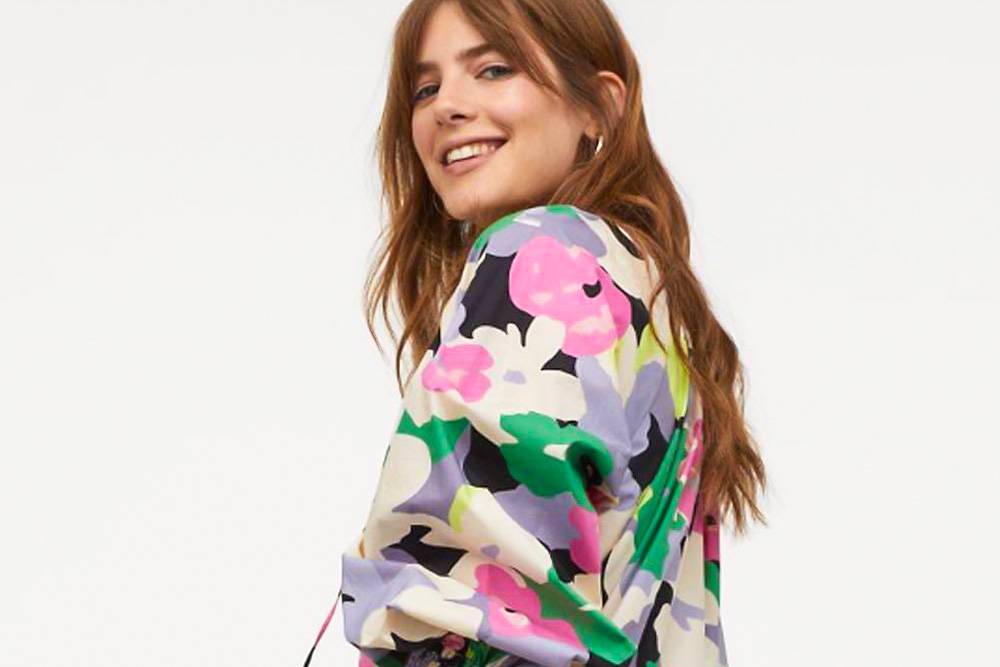
H&M or Hennes & Mauritz AB is a Swedish multinational clothing-retail company founded in 1947 by Erling Persson. It creates fast-fashion clothing for men, women, teenagers, and children.
It's the second-largest clothing retailer globally, just behind the Inditex Group, Zara's parent company. H&M operates more than 5,000 stores in 74 countries and has other individual brands with separate concepts in addition to the H&M brand.
The group is using its influence to support a positive transformation of the global fashion industry. It wants to innovate and be more transparent to create a fair environment for all.
H&M aims to lead the change toward a more sustainable fashion industry. It encourages its customer to shop consciously, wash less, repair, and recycle.
The clothing retailer has a sustainable collection made from organic or recycled materials since 2019. It's called "Conscious" and represents under 10% of its product range.
The group is committed to having responsible purchasing practices and operates as a fair business partner with its suppliers.
H&M also supports the Ellen MacArthur Foundation to accelerate the development of a circular economy.
Panaprium is independent and reader supported. If you buy something through our link, we may earn a commission. If you can, please support us on a monthly basis. It takes less than a minute to set up, and you will be making a big impact every single month. Thank you!
Sustainability Rating: 5/10
Rating FAQ
Category: Clothing, accessories, shoes, bags, jewelry
For: Men, women, children
Type: Denim, dresses, sweaters, basics, loungewear, sportswear, swimwear, underwear
Style: Casual, formal, chic, classic, boho, rock
Quality: Low
Price: $
Sizes: Petite, 2XS-4XL, 0-18 (US), 2-20 (UK), 32-48 (EU), 4-22 (AU), plus size
Fabrics: Cotton, linen, lyocell, cupro, polyester, nylon, spandex, leather, silk, wool, rubber
100% Organic: No
100% Vegan: No
Ethical & Fair: No
Recycling: Yes
Producing country: Turkey, India, Bangladesh, China, Myanmar, Cambodia, Indonesia
Certifications: FSC, RDS, RWS
Sustainability Practices
“At H&M Group, we are continually working to make our business model more sustainable to secure long-term growth and, at the same time, make a positive contribution to the world.”
- Helena Helmersson, H&M Chief Executive Officer
H&M has long been aware of the disastrous impact of fast fashion on people and the environment. It's continuously making efforts to become more ethical and sustainable. It's exploring new, more sustainable ways to make, transport, and package its products.
The group wants to take the lead and recycle unwanted clothes on a global scale. It operates a Garment Collecting program since 2013 with its business partner I:CO. It also launched a rental service at one of its Stockholm stores.
H&M is fighting against waste by promoting repairing and remaking. It's one of the largest buyers of organic cotton and accelerates sustainable material innovation.
H&M uses some organic and recycled materials, including organic cotton, recycled polyester, and regenerated nylon. It also uses semi-synthetic fabrics such as lyocell and cupro.
But only a very small proportion of the materials used by H&M are environmentally friendly and sustainable. The group considers a garment sustainable when it's made from at least 50% sustainable fibers.
The H&M Group publishes a list of all its manufacturers and many of its processing facilities. It's working for fair jobs and increasing its transparency.
The 2020 Fashion Transparency Index gave H&M a score of 73% based on how much the group discloses about its social and environmental policies, practices, and impacts.
H&M manufactures its clothes in Turkey and many other East Asian countries where human rights and labor law violations still happen every day.
The Swedish clothing retailer doesn't show any labor certification standard that would ensure good working conditions, decent living wages, health, safety, and other important rights for workers in its supply chain.
H&M doesn't use fur, angora, or exotic animal skins but uses wool, merino, cashmere, silk, down feathers, and leather to make its clothes, shoes, and accessories. Wool, silk, down, and leather are cruel and unethical materials that also harm the environment. More sustainable alternatives already exist.
Sustainability Goals
H&M is working on innovative ways to bring a higher and higher proportion of recycled and organic fibers into its compositions.
H&M intends to source 100% sustainable cotton and eliminate hazardous chemicals by 2020. Its central goal is to reach 100% recycled, repurposed, or more sustainably sourced materials by 2030, if not sooner. However, there is no evidence that these targets will be reached.
The clothing retailer is committed to making two tiers of its supply chain climate neutral by 2030. By 2040, H&M strives to have a 100% climate positive value chain by increasing energy efficiency and using renewable energy in its facilities.
The H&M Group knows that it's responsible for all of its 177,000 employees as well as the 1.6 million textile workers employed by its suppliers. It has a clear strategy to improve living wages and working conditions in the future.
Buy Here
Discover H&M sustainable apparel collections at hm.com.
Reviews And Experiences With H&M
Have you had (good) experiences with shopping at or the products of H&M? Then leave us your rating below.
What We're Up Against
Multinational corporations overproducing cheap products in the poorest countries.
Huge factories with sweatshop-like conditions underpaying workers.
Media conglomerates promoting unethical, unsustainable products.
Bad actors encouraging overconsumption through oblivious behavior.
- - - -
Thankfully, we've got our supporters, including you.
Panaprium is funded by readers like you who want to join us in our mission to make the world entirely sustainable.
If you can, please support us on a monthly basis. It takes less than a minute to set up, and you will be making a big impact every single month. Thank you.






























0 comments